Disco Fever
The Land Rover Discovery first arrived in Australia in 1991 and 1994 brought with it a facelift release for the D1. This model ran until 1999 when the all-new Discovery 2 was launched. The body shape remained true to the original design, but with increased dimensions. The interior trim specifications were also raised at this point to give the Disco a more desirable level of comfort.
The D2 was also given a facelift in 2002, with new headlights and further interior upgrades.
In 2005, the all-new Land Rover Discovery 3 reached Australia. The new design moved away from the traditional body over ladder frame chassis and merged the two. The overall emphasis moved further towards luxury while maintaining 4WD capability. The latest Discovery 4 builds on the Discovery 3 and has moved even further into the realms of luxury, while maintaining the same body/frame construction.
We had to come up with a way to give the D4 a good going over, so we decided to take it on a trip with a vehicle from each previous generation. Even though the model we had on test was worth six figures, we definitely weren’t planning on chauffeuring ourselves to a posh hotel for afternoon tea. The route we chose had rock crawling, ruts, mud, water, and everything in between. This was going to be no picnic for the Discos. Let’s take a closer look at how these evolutions have changed the abilities of the Discovery over the years.
MECHANICALS
With each evolution of the Discovery, there has been a choice between petrol and diesel engines. It’s interesting to look at the engine table to see how the diesel has evolved over the years from being the less dynamic choice to the current monster, which provides more torque than even the mighty 5.0L V8 petrol engine!
However, the heaviest D1 weighed in with a kerb weight of around 2099kg, while the heaviest D4 comes in at 2583kg.
That’s nearly half a tonne of added weight. Some of the extra weight came when the D3 switched to the combined body/chassis design and the rest comes from all the additional luxury and features.
Over the years, the Land Rover has won numerous awards with the Discovery. The D3 holds a total of 97 international awards, which is believed to be a world record for a single production vehicle. This means that the D4 has quite the reputation to live up to. However, for every award there has also been criticism levelled at the overall quality of mechanicals and electronics alike.
Early Discos suffered badly from electrical gremlins and also became famous for their anti-corrosion systems – engines and transmissions that leaked oil almost as soon as they were delivered to the customer. This has severely tarnished the reputation of Land Rover, but the improved reliability and quality in the D3 has gone some way to improve perceptions.
Time will tell whether the D4 manages to keep up this trend, but our test vehicle did throw up a couple of electrical gremlins, with some of the exterior cameras working intermittently and the electronic aids requiring an ignition off/on reboot on one occasion.
SUSPENSION AND TRACTION CONTROL
The original D1 borrowed the solid axle, all-round coil sprung suspension from the Range Rover. In some D2 models, the rear coils were replaced with self-levelling airbags, while retaining the rigid axles both front and rear. The D3 broke the rigid-axle tradition with the introduction of independent suspension and electronically controlled airbags at every corner. The new D4 also uses this set-up to good effect.
There are three settings available at the touch of a button: exit, normal, and off-road heights. This means that the centre of gravity can be lowered for better on-road performance while also providing clearance off it. It’s programmed to duplicate the articulation found with rigid axles by cross-linking the airbags on either side, so when the front left goes down, the front right goes up to maintain a level stance without being hindered by spring rates.
The original D1 didn’t have the luxury of traction control, as this wasn’t available until the D2 came along. This system braked individual wheels when slip was detected and was quite an advance at the time. However, the D3 took this to another level with the introduction of the Terrain Response dial in the centre console. This dial allowed the driver to switch between electronic programs for different terrain. The computer would then adjust the dynamics of the vehicle to meet the selected choice: raising the suspension, selecting the best gearbox setting, adjusting the throttle response, and locking the diffs.
All D1 and some D2 models rely purely on mechanical traction systems, with a lockable centre differential as the only standard traction aid. Other D2s swapped the centre diff with standard traction control.
The D3 introduced standard electronically operated centre and optional rear differential locks, which continues in the D4 (rear locker standard in 5.0L V8). These lockers are electronically controlled by the Terrain Response system and work brilliantly.
The D4 has modified the Terrain Response by moving the selector dial from behind the gear selector to in front, which makes its use far easier.
Secondly, a sand-launch feature has been added, which reduces the tyres digging into soft sand by braking the wheels to stop spinning. Finally, the rock crawling setting moves the brake pads closer to the disc surface, which means that there is a quicker reaction to wheels spinning over loose rocky surfaces.
Throughout the evolution of the Discovery there has been an emphasis towards improved on-road handling without affecting the off-road performance.
In its day, the D1 had reasonable on- and good off-road performance, but drive one now and you can see how things have moved on.
During this test, the D4 had both the power and handling to leave every other generation trailing in its wake thanks to an amazing 600Nm of torque from the 3.0L TDV6. The engine really does make the D4 fly and the suspension does a good job of keeping the 2.5 tonnes in check, but you still know that you are driving a large 4WD.
The upgraded suspension geometry and stiffer front swaybar do improve things over the D3. So, does this extra grunt and on-road performance make the D4 a pig when it hits the dirt?
OFF-ROAD
Locking the Discos into low range and jumping out to let down the tyres, we noticed the first real concern. Land Rover has upgraded the brake discs to 360mm front and 350mm rear on the D4, which means that 19in wheels are needed to clear the callipers. As soon as we dropped the pressures down on the 255x55R19 tyres, there wasn’t much room between rocks and an expensively damaged alloy rim. We’d be looking to replace the standard rubber with a bigger profile, light truck option to reduce this risk. There aren’t many mud tyres on the market in this profile.
The first real test for the D4 was a favourite rock climb of ours. It looks fairly innocent, but there are a couple of steps to negotiate just before you reach the summit that normally throw a front wheel in the air and make things tricky. Less momentum than normal saw the D4 pop up over the crest without loads of wheel spin and dust flying everywhere as the traction control works exceptionally well.
From that point forward, the D4 showed that it’s still a very capable 4WD, with no dramas over any of the obstacles in its way. It took water crossings with ease and negotiated ruts without breaking a sweat. There was one point on the route that tends to catch out most 4WDs.
There is a steep slope exiting the river that has soft sand and a couple of holes that can get a vehicle crossed up. The D4 climbed straight out with no trouble at all. The D3 also got over this section thanks to its traction aids, but the D2 showed that it had the poorest off-road capabilities on the day by needing a lot more momentum.
The D1 would have fared the same, but as the recovery vehicle for the day it was fitted with front and rear lockers and mud-terrain tyres, so it went everywhere the D4 did and then some. We came across a fallen tree blocking the track and found a drive-around, except that is the owner of the D1 (Tony). He flicked on both lockers to drive over the tree. This looked spectacular, and once the diff pumpkins were held up the winch was deployed.
In a couple of minutes the D1 was straight over the tree, but nursing a bent steering arm. If there’s an upside to early Discos having such weak steering links, it’s that although they’ll bend, they are also easy to straighten out in the bush!
MODIFICATIONS
Discovery 1s and 2s are well served by the aftermarket stores, with a range of bars and suspension mods – in fact, everything to make the Disco even better off-road. The D3 has been less well catered for and this reflects the fact that they’re still too expensive to throw down rutted tracks on a regular basis. There is no arguing that the Terrain Response beats a D1 or D2 without a front or rear locker, but there isn’t the demand for D3 accessories like these older generations.
The other issue is the technology. With rigid axles and coil springs it’s easy to fit longer suspension, but with computerised airbags and double wishbones, the task becomes a lot harder. The D4 takes the costs and technology up to a higher level again. The best you can find will be a bullbar and a snorkel for serious off-roading.
Even the Land Rover catalogue lists more for show than go. If the lottery does strike you lucky and you want a Landy, then at least you’ll know that with decent tyres the D4 will be capable of taking you where you want to go and makes longdistance touring a pleasure.
FINAL THOUGHTS
The D4 is an amazing piece of kit and still has genuine 4WD capabilities, but in reality, how many six-figure 4WDs are we going to see crossing the Simpson or heading up to the Cape any time soon? It’s a shame that such a capable vehicle is going to be shackled to the cities, but when you dress something up like a show pony, it’s not going to like getting down and dirty.
When we showed the D4 the dirt there were always worrying niggles in the back of our minds – like will the ECU shut down or the wheel brace snap changing a puncture? That pretty much sums up the Discovery: great fun and one of the most capable 4WDs out there, but how long is that going to last when the going gets tough?
THANKS
Our appreciation goes out to Tony Robinson from Ringwood in VIC with the D1, Mike Harris from Prospect in NSW with the D2, and Kevin Wright from Anna Bay in NSW for bringing along their Discoveries.
ENGINES
D1
1991 only
3528cc (3.5L) V8 Petrol
105kW @ 4750rpm
250Nm p250Nm @ 3100rpm
1992 to 1994
2495cc (200Tdi) Four-cylinder Turbo Diesel
80kW @ 4000rpm
190Nm @ 1800rpm
1994 to 1999
3947cc (3.9L) V8 Petrol
134kW @ 4750rpm
304Nm p304Nm @ 3100rpm
1994 to 1999
2495cc (300Tdi) Four-cylinder Turbo Diesel
83kW @ 4000rpm
198Nm @ 1800rpm
D2
1999 to 2005
3950cc (4.0L) V8 Petrol
138kW @ 4750rpm
320Nm @ 2600rpm
1999 to 2005
2495cc (Td5) Four-cylinder Turbo Diesel
101kW @ 4200rpm
315Nm @ 1950rpm
D3
2005 to 2009
4009cc (Ford V6) V6 Petrol
160kW @ 4500rpm
360Nm @ 3000rpm
2005 to 2009
2720cc (TDV6) V6 Diesel
140kW @ 4000rpm
445Nm @ 1900rpm
2005 to 2009
4394cc (Jaguar V8) V8 Petrol
220kW @ 5500rpm
427Nm @ 4000rpm
D4
2009 on
2720cc (2.7L TDV6) V6 Diesel
140kW @ 4000rpm
445Nm @ 1900rpm
2009 on
2993cc (3.0L TDV6) V6 Diesel
180kW @ 4000rpm
600Nm @ 2000rpm
2009 on
5000cc (Jaguar V8) V8 Petrol
276kW @ 6500rpm
510Nm @ 3500rpm
PRICES
All prices are based on a four-door diesel automatic
D1 Tdi
NEW PRICE: $50,430–$51,800
CURRENT VALUE: $3100–$7100
D2 TD5
NEW PRICE: $49,314–$51,290
CURRENT VALUE: $9600–$17,100
D3 2.7L TDV6 S
NEW PRICE: $64,650–$67,590
CURRENT VALUE: $25,400–$63,300
D4 3.0L TDV6 SE
NEW PRICE: $81,990
WORDS BY NIC FRAME PHOTOGRAPHY BY TIM MUNRO




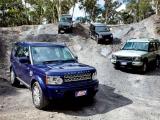
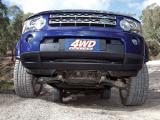
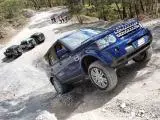
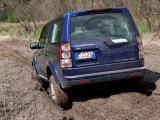
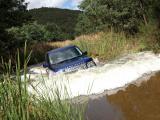
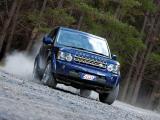
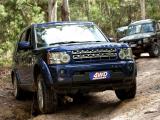
Comments
You have increased chances of success if you prepare for 220-802 dumps Certified Application Associate - SAP BusinessObjects Access Control 10.0 exam with the help When you buy SAP pass4sure 220-802 from Pass4sure dumps, it will be accessible with SAP BusinessObjects Access Control 10.0 download for facilitating passforsure 220-802 you with the scenario of actual exam.
Excellent post.I was checking constantly this blog and I am impressed! Very useful info specifically the last part I care for such information a lot. I was seeking this certain information for a very long time.Debt consolidation reviews